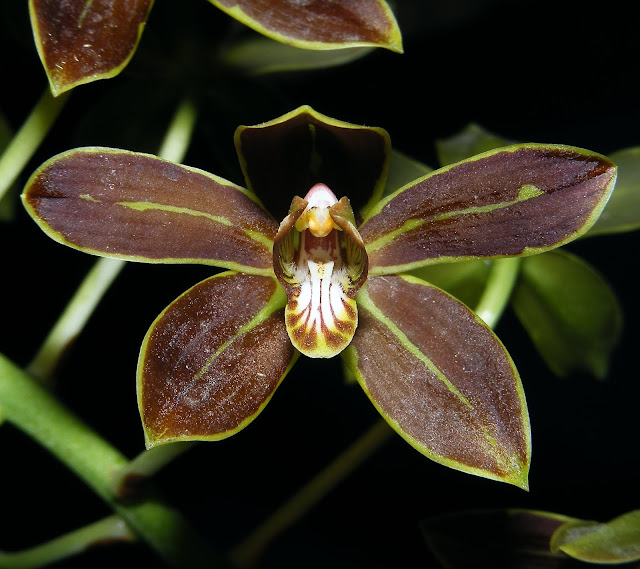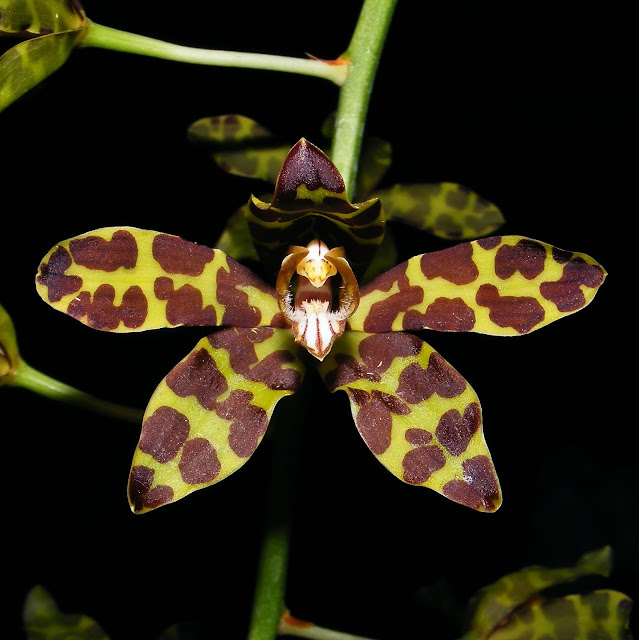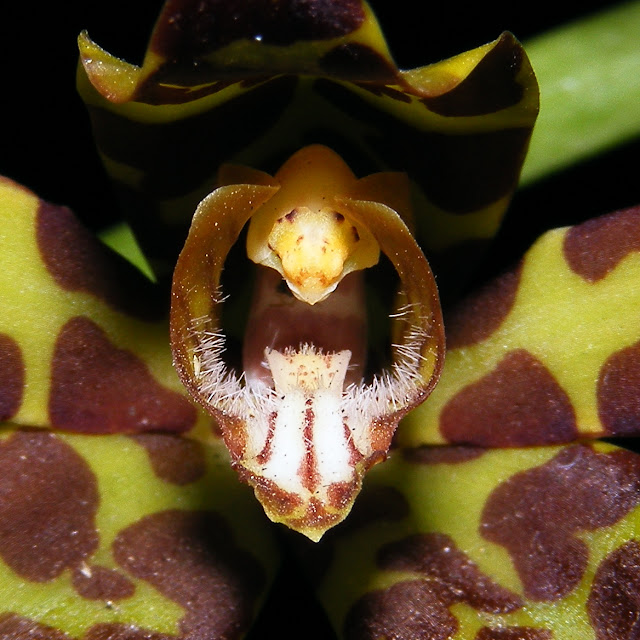How to tell Grammatophyllum multiflorum and G. scriptum apart
From observations, many orchid collectors here and abroad still confuse two similar-looking Grammatophyllum species, G. multiflorum and G. scriptum. Indeed, the popular G. multiflorum fma. citrinum is still labeled as G. scriptum var./fma. citrinum in many collections and orchid shows around the world. But is the confusion warranted? In this post, we will compare the two taxa and discuss the characters that you, the orchid collector, can use to distinguish the two. So get your new tags and a pen ready.
Grammatophyllum multiflorum
This is a species endemic to the Philippines and widespread on southern Luzon, and has been found on the western islands of Mindoro and Palawan as well as Leyte and Samar in the Visayas. This is the most commonly encountered Grammatophyllum species on Luzon. The flowers are usually around 5 cm in width and mainly dark brown with a pale green median line and edges. If you look closely at the labellum you will see a median ridge surrounded by trichomes (those aren't technically 'hairs' although they do look like hairs). The ridge itself is glabrous (smooth).
Cootes (2011) mentioned that the midlobe of this species is rectangular but I find that description ambiguous as the midlobe is commonly ovate (egg-shaped) with some specimens displaying sub-parallel midlobe margins which may have given rise to Cootes' description of the labellum midlobe being "rectangular".
Grammatophyllum multiflorum's flowers are closely spaced on the rachis, giving a 'foxtail' look on the entire arrangement.
Below is a variant of the species, var. tigrinum, which is separated from the nominate variety by the markings which are broken down into irregularly-shaped spots.
And as you can see in the photos below, the trichomes are also absent on the labellum ridge:
The midlobe of var. tigrinum as seen from above. Still not rectangular.
The floral arrangement of var. tigrinum. As you can see it differs from var. multiflorum only by the nature of the markings on the sepals and petals.
And here is the handsome fma. citrinum, which of course differs by having a citrine flower color. This color form is found in the southern Luzon province of Albay, where the majestic Mayon Volcano is situated.
Grammatophyllum scriptum
This species is found on the Moluccas, New Guinea, the Solomon Islands, and Fiji. In the Philippines, it occurs on Mindanao, in the Zamboanga Peninsula and the island of Sarangani off Davao del Sur and likely within the Sulu Archipelago to Tawi-Tawi, but I suspect it to be much more widely spread on the Mindanao mainland. It is worth mentioning here that it occurs where G. multiflorum is not found.
The flowers of G. scriptum are larger and reach to 7.5 cm across the petals. In terms of markings, it is most similar to G. multiflorum var. tigrinum, but here the spots are more rounded than elongated. The labellum also bear trichomes but compared to that of the previous species, these are also present on the ridge and are continue up to about midway up of the side lobes. Note too how the margins of the midlobe are oriented diagonally, giving a widely V-shaped aspect when seen up front. The midlobe of G. multiflorum is flat.
Compared to G. multiflorum, the flowers of G. scriptum are more widely spaced, giving a lax arrangement.
Distinguishing between the two is very simple- if your plants are in flower. I haven't been able to find clear-cut differences on the two species' vegetative features, but if you do know their provenance with certainty, then you can label them with accuracy. So in brief, the two species are separated from each other by the presence vs absence of trichomes on the ridge, the habit of the midlobe, the size of the flowers and their distance from one another on the rachis, and by their provenance. For sure there are other traits where one can see additional differences, but the spot characters I mentioned will suffice for the everyday gardener.
Further reading
Cootes J.E. 2011. Philippine Native Orchid Species
Tiu D.A. 2009. Deciphering the Scriptures on Philippine Grammatophyllum. PCARRD-DOST, Los Baños, Laguna, Philippines.
Valmayor H.L. 1984. Orchidiana Philippiniana. Eugenio Lopez Foundation, Inc., Manila , Philippines



















Hi. Excellent article! I'm going to re-label my citrinum. I have a question. I have a few plants labeled "G. scriptum v Kiliani", which are tiny, and in bloom. I grow them in clay thumb pots. They throw up a few flowers on a spike. On e-bay today, I saw a "Kiliani" type listed as G. scriptum v. multiflorum. It was in bloom and growing in a 2" pot. Are "Kiliani's" scriptums? multiflorums? or something else like a mutation of a full-sized Grammatophyllum. Thanks! Tim.
ReplyDeleteHi Tim. Okay, you got me. I have no idea what Kiliani is, but I must say that throughout its taxonomic history, multiflorum has never been a variety of scriptum. Tigrinum was; it is now considered a variant of multiflorum. If you have some photos of Kiliani flowers, then I might be able to give you a better guess about its identity 😁
Delete